History
How Hurricane Matthew forced Universal Orlando to extend Halloween Horror Nights 2016’s run through early November
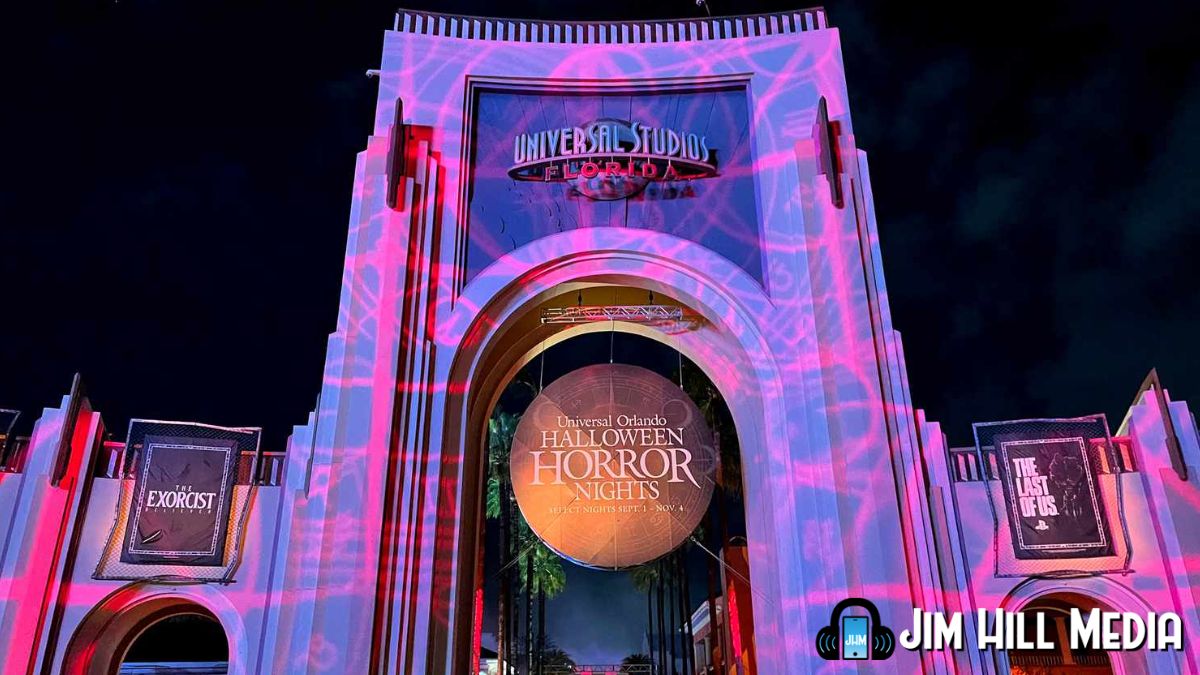
Halloween is one of those holidays that lingers, isn’t it?
Whether it’s all of those decorations that are still out in the yard (which you’ll finally get around to taking down & packing away later this weekend … right?) or that bowl of leftover Treat-or-Trick candy that you’ve been slowly make disappear one fun-sized bar at a time, while All Hallows Eve should have been over at the stroke of midnight on October 31st … Well, just like that jack-o-lantern that the kids carved (which should have gone in the trash days go, but is still proudly displayed out on the front steps), this holiday somehow always manages to hang on a few extra days.
That’s certainly what happened this year at the Universal Orlando Resort. Universal Studios Florida‘s Halloween Horror Nights went into extra innings (Just like the Chicago Cubs did in Game 7 of the World Series. Go Cubs!) with that super-popular after-hours hard ticket seasonal event continuing on through tonight.
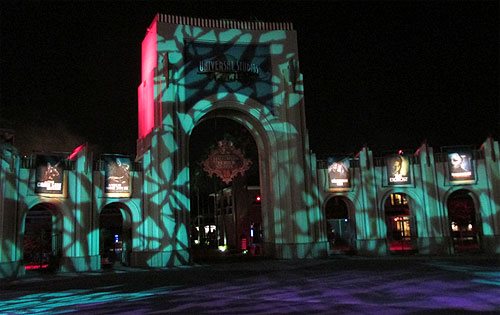
Photo by Jim Hill
Mind you, this was all Matthew‘s fault. You remember that hurricane which happened in early October, right? The one that – at one point — achieved Category 5 status while it was out in the Atlantic basin, gathering strength. And when the National Weather Service’s computer models showed that there was a very high probability that Matthew would come barreling out of the Caribbean and then send torrential rains & hurricane-force winds Central Florida’s way, Universal Orlando officials swung into action.
“Given what this Resort has to do in order to prepare for a hurricane, we knew that Matthew was going to impact at least two days of this year’s Halloween Horror Nights event,” explained Alyson Lundell, the director of Public Relations for Universal Orlando. “Once we made the decision to close the parks on Friday, we were in constant communications with our Guest Relations team. Who were ultimately going to be the front line when it came to dealing with that closure. We were also fortunate that – out ahead of Matthew – our call center was properly staffed and ready to deal with all of the people who’d now be looking to exchange or reschedule their Halloween Horror Nights tickets.”
Unfortunately, what with both of Universal Orlando’s theme parks & CityWalk closing at 5 p.m. Thursday (so that the Resort’s team members would then have sufficient time to get home safely and begin their own preparations for Matthew’s arrival), that meant that UO’s call center also had to shut down.
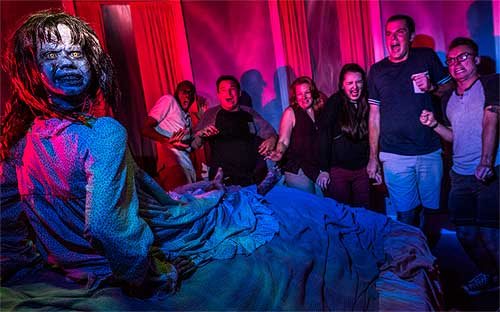
Copyright 2016 Universal Orlando. All rights reserved
“But that’s what’s great about having a partner like Loews. When we were forced to temporarily close our call center in Orlando, Loews was able to jump in and help us with a call center that they had out-of-state that could then assist us with answering guests questions until our own call center team could get back up and running the following day,” Lundell continued.
Speaking of teams … While first Universal Orlando’s call center and then Loew’s call center was helping Halloween Horror Night fans exchange or reschedule their tickets, out ahead of Matthew’s projected arrival, Universal Studios Florida was a veritable bee hive of activity. As the HHN tech & décor teams scrambled to dismantle all of this annual event’s temporary stage spaces. Not to mention all of that gruesome décor, those thousands of carefully constructed props & set pieces which are placed throughout this theme park to properly set the scene for this seasonal show.
“I definitely have to give credit to our tech & décor teams — and honestly almost every discipline or division at UO — in their ability to react to this situation,” said Patrick Braillard, who’s a show director with Universal Orlando’s creative development department. “This was the first major hurricane to even come close to us in – what? – the last 12 years. And while the theme parks themselves, wherever you go, they’re all hurricane-rated as far as their infrastructure is concerned. But as for all of that Halloween Horror Night décor, that had to be quickly & carefully struck and secured. Largely because – as soon as this storm passed – it was then all going to have to go back up again.”
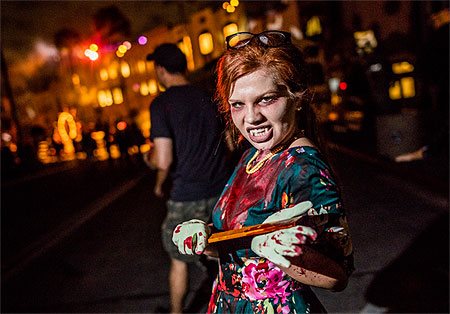
Copyright 2016 Universal Orlando. All rights reserved
“That’s the thing that truly amazed me about the teams here at Universal Orlando. They were able to strike every temporary element for Halloween Horror Nights in just 12 hours and were then able to get everything back in place 24 hours after that,” Braillard continued. “Just the fact that they were able to navigate through the logistics of doing all that, getting our parks back in full operation so quickly, just amazes me. Our teams really went above & beyond the call here in terms of trying to figure out how exactly to do that.”
But even so, in the wake of Hurricane Matthew’s passing, Universal Orlando was then facing a huge HHN-related challenge. The 2016 version of this after-hours hard ticket had originally been scheduled to run for a record 31 days. And since tickets had been on sale since June, there were now thousands of people who’d been impacted by the Resort’s decision to cancel those two Halloween Horror Nights which had originally been scheduled for October 6 & 7th.
Using social media (as well as other media outlets in & around Central Florida like the Sentinel & local television stations), Universal Orlando quickly got the word out that that tickets purchased for the October 6th & 7th dates of the event would be honored on any other night of HHN 26.

Copyright 2016 Universal Orlando. All rights reserved
“But even then, we knew that we’d really need to do more here in order to give back to our guests what they’d lost. So pretty early on, we decided to extend Halloween Horror Nights’ run, tack on two extra days to make up for those that had been lost to Matthew,” Alyson stated. “To be honest, it didn’t take all that long to get everybody on the same page and get this decision made. The only real hold-up – and it was really a brief one – was in getting this new ticket product online so that people could then actually book those dates. But this decision was made literally on the heels of that hurricane passing us by.”
Which brings us back to Halloween Horror Nights extending its run into early November. Which might confound those who work in retail (Which — according to what I witnessed in our local Target this past Wednesday – there was a one day-long post-Halloween sale. Which was then immediately followed by a store-wide “deck-the-halls” effort in order to get that place ready for the holidays). But according to Braillard, adding two extra days to HHN 26’s operating schedule is really Christmas-come-early for horror fans.
“This extension now gives them the opportunity to reexamine, reexperience this event. Do a deeper dive on the nine mazes, five scare zones and 2 shows that we’ve staged at Halloween Horror Nights 26,” Patrick enthused.
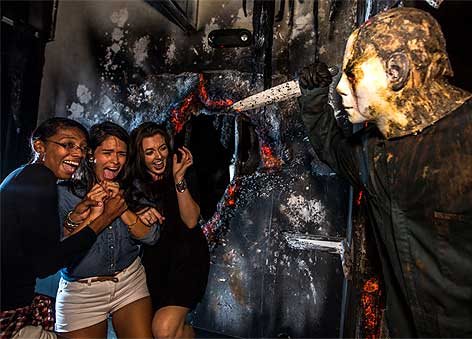
Copyright 2016 Universal Orlando. All rights reserved
And speaking of shows, given that this year’s HHN features the 25th anniversary edition of “Bill & Ted’s Excellent Halloween Adventure,” the very last presentation of this live stage show is sure to be something that pop culture fans really don’t want to miss.
“Traditionally, the final show of the season for Bill & Ted — because so many Halloween Horror Night fans have already seen this live show multiple times over the course of the event, they’re now screaming the lines along with the actors onstage because they now know this show so well – can get pretty wild,” Braillard said. “Especially when you get 2000 people in the stands doing that.”
But as much as Patrick is looking forward to that Rocky-Horror-meets-rock-concert moment at HHN 26, he and his team are already hard at work on HHN 27. In fact, just before getting on the phone with me to talk about Hurricane Matthew’s impact on this year’s event, Braillard had been down in the lab with his colleagues at Universal Creative discussing concepts for mazes for next year’s event.
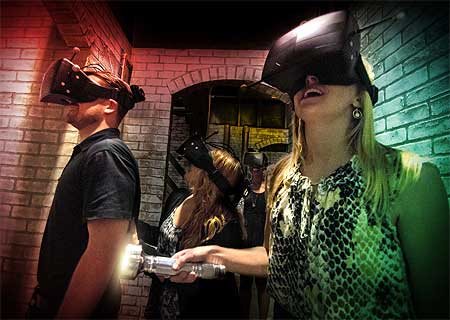
Copyright 2016 Universal Orlando. All rights reserved
“We are literally knee deep – or should I say neck deep? – in what’s going to be happening at the 2017 edition of Halloween Horror Nights,” Patrick concluded. “That’s truly where our focus is right now.”
So while you’re spending your week actively looking for excuses to put off pulling this year’s Halloween decorations out of the front yard and then putting them away, Universal Creative team members are already hard at work designing mazes & decorative elements for Halloween 2017. Doesn’t that make you feel lazy / ashamed?
Here. Eat a fun-sized Snicker’s bar. It’ll make you feel better.
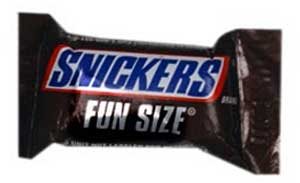
Copyright 2016 Mars, Incorporated. All rights reserved
This article was originally published by the Huffington Post on Saturday, November 5, 2016
History
The Evolution and History of Mickey’s ToonTown

Disneyland in Anaheim, California, holds a special place in the hearts of Disney fans worldwide, I mean heck, it’s where the magic began after all. Over the years it’s become a place that people visit in search of memorable experiences. One fan favorite area of the park is Mickey’s Toontown, a unique land that lets guests step right into the colorful, “Toony” world of Disney animation. With the recent reimagining of the land and the introduction of Micky and Minnies Runaway Railway, have you ever wondered how this land came to be?
There is a fascinating backstory of how Mickey’s Toontown came into existence. It’s a tale of strategic vision, the influence of Disney executives, and a commitment to meeting the needs of Disney’s valued guests.
The Beginning: Mickey’s Birthdayland
The story of Mickey’s Toontown starts with Mickey’s Birthdayland at Walt Disney World’s Magic Kingdom. Opened in 1988 to celebrate Mickey Mouse’s 60th birthday, this temporary attraction was met with such overwhelming popularity that it inspired Disney executives to think bigger. The idea was to create a permanent, immersive land where guests could step into the animated world of Mickey Mouse and his friends.
In the early ’90s, Disneyland was in need of a refresh. Michael Eisner, the visionary leader of The Walt Disney Company at the time, had an audacious idea: create a brand-new land in Disneyland that would celebrate Disney characters in a whole new way. This was the birth of Mickey’s Toontown.
Initially, Disney’s creative minds toyed with various concepts, including the idea of crafting a 100-Acre Woods or a land inspired by the Muppets. However, the turning point came when they considered the success of “Who Framed Roger Rabbit.” This film’s popularity and the desire to capitalize on contemporary trends set the stage for Toontown’s creation.
From Concept to Reality: The Birth of Toontown
In 1993, Mickey’s Toontown opened its gates at Disneyland, marking the first time in Disney Park history where guests could experience a fully realized, three-dimensional world of animation. This new land was not just a collection of attractions but a living, breathing community where Disney characters “lived,” worked, and played.
Building Challenges: Innovative Solutions
The design of Mickey’s Toontown broke new ground in theme park aesthetics. Imagineers were tasked with bringing the two-dimensional world of cartoons into a three-dimensional space. This led to the creation of over 2000 custom-built props and structures that embodied the ‘squash and stretch’ principle of animation, giving Toontown its distinctiveness.
And then there was also the challenge of hiding the Team Disney Anaheim building, which bore a striking resemblance to a giant hotdog. The Imagineers had to think creatively, using balloon tests and imaginative landscaping to seamlessly integrate Toontown into the larger park.

Key Attractions: Bringing Animation to Life
Mickey’s Toontown featured several groundbreaking attractions. “Roger Rabbit’s Car Toon Spin,” inspired by the movie “Who Framed Roger Rabbit,” became a staple of Toontown, offering an innovative ride experience. Gadget’s Go-Coaster, though initially conceived as a Rescue Rangers-themed ride, became a hit with younger visitors, proving that innovative design could create memorable experiences for all ages.
Another crown jewel of Toontown is Mickey’s House, a walkthrough attraction that allowed guests to explore the home of Mickey Mouse himself. This attraction was more than just a house; it was a carefully crafted piece of Disney lore. The house was designed in the American Craftsman style, reflecting the era when Mickey would have theoretically purchased his first home in Hollywood. The attention to detail was meticulous, with over 2000 hand-crafted, custom-built props, ensuring that every corner of the house was brimming with character and charm. Interestingly, the design of Mickey’s House was inspired by a real home in Wichita Falls, making it a unique blend of real-world inspiration and Disney magic.
Mickey’s House also showcased Disney’s commitment to creating interactive and engaging experiences. Guests could make themselves at home, sitting in Mickey’s chair, listening to the radio, and exploring the many mementos and references to Mickey’s animated adventures throughout the years. This approach to attraction design – where storytelling and interactivity merged seamlessly – was a defining characteristic of ToonTown’s success.

Executive Decisions: Shaping ToonTown’s Unique Attractions
The development of Mickey’s Toontown wasn’t just about creative imagination; it was significantly influenced by strategic decisions from Disney executives. One notable input came from Jeffrey Katzenberg, who suggested incorporating a Rescue Rangers-themed ride. This idea was a reflection of the broader Disney strategy to integrate popular contemporary characters and themes into the park, ensuring that the attractions remained relevant and engaging for visitors.
In addition to Katzenberg’s influence, Frank Wells, the then-President of The Walt Disney Company, played a key role in the strategic launch of Toontown’s attractions. His decision to delay the opening of “Roger Rabbit’s Car Toon Spin” until a year after Toontown’s debut was a calculated move. It was designed to maintain public interest in the park by offering new experiences over time, thereby giving guests more reasons to return to Disneyland.
These executive decisions highlight the careful planning and foresight that went into making Toontown a dynamic and continuously appealing part of Disneyland. By integrating current trends and strategically planning the rollout of attractions, Disney executives ensured that Toontown would not only capture the hearts of visitors upon its opening but would continue to draw them back for new experiences in the years to follow.
Global Influence: Toontown’s Worldwide Appeal
The concept of Mickey’s Toontown resonated so strongly that it was replicated at Tokyo Disneyland and influenced elements in Disneyland Paris and Hong Kong Disneyland. Each park’s version of Toontown maintained the core essence of the original while adapting to its cultural and logistical environment.
Evolution and Reimagining: Toontown Today
As we approach the present day, Mickey’s Toontown has recently undergone a significant reimagining to welcome “Mickey & Minnie’s Runaway Railway” in 2023. This refurbishment aimed to enhance the land’s interactivity and appeal to a new generation of Disney fans, all while retaining the charm that has made ToonTown a beloved destination for nearly three decades.

Dive Deeper into ToonTown’s Story
Want to know more about Mickey’s Toontown and hear some fascinating behind-the-scenes stories, then check out the latest episode of Disney Unpacked on Patreon @JimHillMedia. In this episode, the main Imagineer who worked on the Toontown project shares lots of interesting stories and details that you can’t find anywhere else. It’s full of great information and fun facts, so be sure to give it a listen!
History
Unpacking the History of the Pixar Place Hotel

Pixar Place Hotel, the newly unveiled 15-story tower at the Disneyland Resort, has been making waves in the Disney community. With its unique Pixar-themed design, it promises to be a favorite among visitors.
However, before we delve into this exciting addition to the Disneyland Resort, let’s take a look at the fascinating history of this remarkable hotel.
The Emergence of the Disneyland Hotel
To truly appreciate the story of the Pixar Place Hotel, we must turn back the clock to the early days of Disneyland. While Walt Disney had the visionary ideas and funding to create the iconic theme park, he faced a challenge when it came to providing accommodations for the park’s visitors. This is where his friend Jack Wrather enters the picture.
Jack Wrather, a fellow pioneer in the television industry, stepped in to assist Walt Disney in realizing his dream. Thanks to the success of the “Lassie” TV show produced by Wrather’s company, he had the financial means to build a hotel right across from Disneyland.
The result was the Disneyland Hotel, which opened its doors in October 1955. Interestingly, the early incarnation of this hotel had more of a motel feel than a hotel, with two-story buildings reminiscent of the roadside motels popular during the 1950s. The initial Disneyland Hotel consisted of modest structures that catered to visitors looking for affordable lodging close to the park. While the rooms were basic, it marked the beginning of something extraordinary.
The Evolution: From Emerald of Anaheim to Paradise Pier
As Disneyland’s popularity continued to soar, so did the demand for expansion and improved accommodations. In 1962, the addition of an 11-story tower transformed the Disneyland Hotel, marking a significant transition from a motel to a full-fledged hotel.
The addition of the 11-story tower elevated the Disneyland Hotel into a more prominent presence on the Anaheim skyline. At the time, it was the tallest structure in all of Orange County. The hotel’s prime location across from Disneyland made it an ideal choice for visitors. With the introduction of the monorail linking the park and the hotel, accessibility became even more convenient. Unique features like the Japanese-themed reflecting pools added to the hotel’s charm, reflecting a cultural influence that extended beyond Disney’s borders.
Japanese Tourism and Its Impact
During the 1960s and 1970s, Disneyland was attracting visitors from all corners of the world, including Japan. A significant number of Japanese tourists flocked to Anaheim to experience Walt Disney’s creation. To cater to this growing market, it wasn’t just the Disneyland Hotel that aimed to capture the attention of Japanese tourists. The Japanese Village in Buena Park, inspired by a similar attraction in Nara, Japan, was another significant spot.
These attractions sought to provide a taste of Japanese culture and hospitality, showcasing elements like tea ceremonies and beautiful ponds with rare carp and black swans. However, the Japanese Village closed its doors in 1975, likely due to the highly competitive nature of the Southern California tourist market.
The Emergence of the Emerald of Anaheim
With the surge in Japanese tourism, an opportunity arose—the construction of the Emerald of Anaheim, later known as the Disneyland Pacific Hotel. In May 1984, this 15-story hotel opened its doors.
What made the Emerald unique was its ownership. It was built not by The Walt Disney Company or the Oriental Land Company (which operated Tokyo Disneyland) but by the Tokyu Group. This group of Japanese businessmen already had a pair of hotels in Hawaii and saw potential in Anaheim’s proximity to Disneyland. Thus, they decided to embark on this new venture, specifically designed to cater to Japanese tourists looking to experience Southern California.
Financial Challenges and a Changing Landscape
The late 1980s brought about two significant financial crises in Japan—the crash of the NIKKEI stock market and the collapse of the Japanese real estate market. These crises had far-reaching effects, causing Japanese tourists to postpone or cancel their trips to the United States. As a result, reservations at the Emerald of Anaheim dwindled.
To adapt to these challenging times, the Tokyu Group merged the Emerald brand with its Pacific hotel chain, attempting to weather the storm. However, the financial turmoil took its toll on the Emerald, and changes were imminent.
The Transition to the Disneyland Pacific Hotel
In 1995, The Walt Disney Company took a significant step by purchasing the hotel formerly known as the Emerald of Anaheim for $35 million. This acquisition marked a change in the hotel’s fortunes. With Disney now in control, the hotel underwent a name change, becoming the Disneyland Pacific Hotel.
Transformation to Paradise Pier
The next phase of transformation occurred when Disney decided to rebrand the hotel as Paradise Pier Hotel. This decision aligned with Disney’s broader vision for the Disneyland Resort.
While the structural changes were limited, the hotel underwent a significant cosmetic makeover. Its exterior was painted to complement the color scheme of Paradise Pier, and wave-shaped crenellations adorned the rooftop, creating an illusion of seaside charm. This transformation was Disney’s attempt to seamlessly integrate the hotel into the Paradise Pier theme of Disney’s California Adventure Park.
Looking Beyond Paradise Pier: The Shift to Pixar Place
In 2018, Disneyland Resort rebranded Paradise Pier as Pixar Pier, a thematic area dedicated to celebrating the beloved characters and stories from Pixar Animation Studios. As a part of this transition, it became evident that the hotel formally known as the Disneyland Pacific Hotel could no longer maintain its Paradise Pier theme.
With Pixar Pier in full swing and two successful Pixar-themed hotels (Toy Story Hotels in Shanghai Disneyland and Tokyo Disneyland), Disney decided to embark on a new venture—a hotel that would celebrate the vast world of Pixar. The result is Pixar Place Hotel, a 15-story tower that embraces the characters and stories from multiple Pixar movies and shorts. This fully Pixar-themed hotel is a first of its kind in the United States.
The Future of Pixar Place and Disneyland Resort
As we look ahead to the future, the Disneyland Resort continues to evolve. The recent news of a proposed $1.9 billion expansion as part of the Disneyland Forward project indicates that the area surrounding Pixar Place is expected to see further changes. Disneyland’s rich history and innovative spirit continue to shape its destiny.
In conclusion, the history of the Pixar Place Hotel is a testament to the ever-changing landscape of Disneyland Resort. From its humble beginnings as the Disneyland Hotel to its transformation into the fully Pixar-themed Pixar Place Hotel, this establishment has undergone several iterations. As Disneyland Resort continues to grow and adapt, we can only imagine what exciting developments lie ahead for this iconic destination.
If you want to hear more stories about the History of the Pixar Place hotel, check our special edition of Disney Unpacked over on YouTube.
Stay tuned for more updates and developments as we continue to explore the fascinating world of Disney, one story at a time.
History
From Birthday Wishes to Toontown Dreams: How Toontown Came to Be

In the latest release of Episode 4 of Disney Unpacked, Len and I return, joined as always by Disney Imagineering legend, Jim Shull. This two-part episode covers all things Mickey’s Birthday Land and how it ultimately led to the inspiration behind Disneyland’s fan-favorite land, “Toontown”. But let’s not get ahead of ourselves here. It all starts in the early days at Disneyland.
Early Challenges in Meeting Mickey
Picture this: it’s the late 1970s and early 1980s, and you’re at Disneyland. You want to meet the one and only Mickey Mouse, but there’s no clear way to make it happen. You rely on Character Guides, those daily printed sheets that point you in Mickey’s general direction. But let’s be honest, it was like finding a needle in a haystack. Sometimes, you got lucky; other times, not so much.

Mickey’s Birthdayland: A Birthday Wish that Came True
Fast forward to the late 1980s. Disney World faced a big challenge. The Disney-MGM Studios Theme Park was under construction, with the company’s marketing machine in full swing, hyping up the opening of Walt Disney World’s third theme park, MGM Studios, in the Spring of 1989. This extensive marketing meant that many people were opting to postpone their family’s next trip to Walt Disney World until the following year. Walt Disney World needed something compelling to motivate guests to visit Florida in 1988, the year before Disney MGM Studios opened.
Enter stage left, Mickey’s Birthdayland. For the first time ever, an entire land was dedicated to a single character – and not just any character, but the mouse who started it all. Meeting Mickey was no longer a game of chance; it was practically guaranteed.

The Birth of Birthdayland: Creative Brilliance Meets Practicality
In this episode, we dissect the birth of Mickey’s Birthdayland, an initiative that went beyond celebrating a birthday. It was a calculated move, driven by guest feedback and a need to address issues dating back to 1971. Imagineers faced the monumental task of designing an experience that honored Mickey while efficiently managing the crowds. This required the perfect blend of creative flair and logistical prowess – a hallmark of Disney’s approach to theme park design.
Evolution: From Birthdayland to Toontown
The success of Mickey’s Birthdayland was a real game-changer, setting the stage for the birth of Toontown – an entire land that elevated character-centric areas to monumental new heights. Toontown wasn’t merely a spot to meet characters; it was an immersive experience that brought Disney animation to life. In the episode, we explore its innovative designs, playful architecture, and how every nook and cranny tells a story.

Impact on Disney Parks and Guests
Mickey’s Birthdayland and Toontown didn’t just reshape the physical landscape of Disney parks; they transformed the very essence of the guest experience. These lands introduced groundbreaking ways for visitors to connect with their beloved characters, making their Disney vacations even more unforgettable.
Beyond Attractions: A Cultural Influence
But the influence of these lands goes beyond mere attractions. Our episode delves into how Mickey’s Birthdayland and Toontown left an indelible mark on Disney’s culture, reflecting the company’s relentless dedication to innovation and guest satisfaction. It’s a journey into how a single idea can grow into a cherished cornerstone of the Disney Park experience.

Unwrapping the Full Story of Mickey’s Birthdayland
Our two-part episode of Disney Unpacked is available for your viewing pleasure on our Patreon page. And for those seeking a quicker Disney fix, we’ve got a condensed version waiting for you on our YouTube channel. Thank you for being a part of our Disney Unpacked community. Stay tuned for more episodes as we continue to “Unpack” the fascinating world of Disney, one story at a time.
-

 History10 months ago
History10 months agoThe Evolution and History of Mickey’s ToonTown
-

 History11 months ago
History11 months agoUnpacking the History of the Pixar Place Hotel
-

 History11 months ago
History11 months agoFrom Birthday Wishes to Toontown Dreams: How Toontown Came to Be
-

 Film & Movies8 months ago
Film & Movies8 months agoHow Disney’s “Bambi” led to the creation of Smokey Bear
-

 News & Press Releases10 months ago
News & Press Releases10 months agoNew Updates and Exclusive Content from Jim Hill Media: Disney, Universal, and More
-

 Merchandise8 months ago
Merchandise8 months agoIntroducing “I Want That Too” – The Ultimate Disney Merchandise Podcast
-

 Theme Parks & Themed Entertainment3 months ago
Theme Parks & Themed Entertainment3 months agoDisney’s Forgotten Halloween Event: The Original Little Monsters on Main Street
-

 Film & Movies3 months ago
Film & Movies3 months agoHow “An American Tail” Led to Disney’s “Hocus Pocus”








